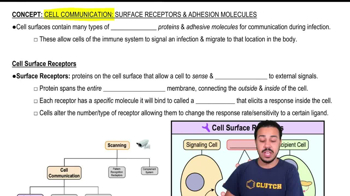True or False; if false, select the answer that best corrects the statement.
Endosteum is most similar to the fibrous layer of the periosteum.
 Verified step by step guidance
Verified step by step guidance Verified video answer for a similar problem:
Verified video answer for a similar problem:


 5:15m
5:15mMaster Periosteum and Endosteum with a bite sized video explanation from Bruce Bryan
Start learning